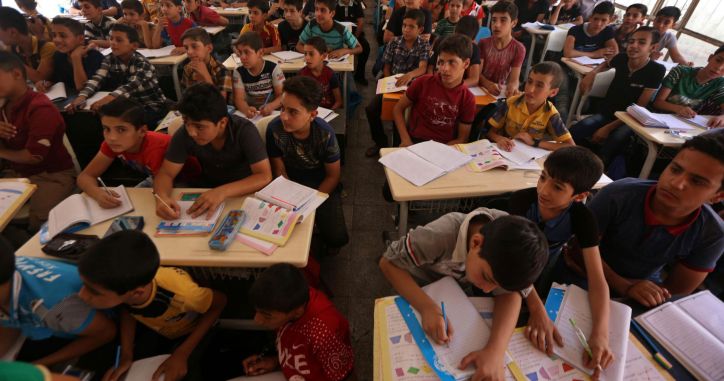Go Public! Underfunding threatens Nordic education systems
Despite their reputation for strong public education systems, Nordic countries in Europe are facing increasing inequalities, teacher shortages, and creeping privatisation. As governments shift the financial burden onto municipalities, schools are forced to compete with other public services for resources. The result? Wealthier areas can sustain higher investment in public education, while others fall behind.
The Nordic Teachers’ Council (NLS) has released a groundbreaking report on education financing, exposing deepening inequalities across the region. Local governments struggle with insufficient state support, making it harder to ensure quality public education for all. The findings highlight the urgent need for greater public investment, reinforcing the call of Education International’s (EI) Go Public! Fund Education campaign.
Education International’s General Secretary David Edwards warned that this crisis is part of a broader global pattern: “Even in the Nordic countries— widely regarded for their strong public education systems—we are witnessing the damaging effects of underfunding. If some of the world’s wealthiest nations won’t commit to fully funding public education, what message does that send globally?”
“As the Go Public! campaign gains momentum, EI member affiliates in the Nordic region and beyond are mobilizing to hold governments accountable for properly funding public education. Education is a public good and a cornerstone of democracy — it must be publicly funded, and publicly delivered.” Edwards stated.
Underfunding, inequalities, and the growing threat of privatisation
Across the region, municipalities are struggling to sustain public education as national governments shift financial responsibility onto local authorities. In Finland, state funding has fallen from 31 percent to 22 percent in a decade, leaving municipalities to run 97 percent of primary and lower secondary schools.
In Sweden, local governments are fully responsible for school funding. Wealthier municipalities can invest in better facilities, smaller class sizes, and additional support for students, while those with lower tax revenues struggle to cover basic operational costs. As a result, decentralised funding has led to stark inequalities, a problem also seen in Norway, where municipal education budgets rely heavily on local taxes. There, per-student funding can differ by as much as US$19,000 between municipalities, further deepening regional disparities in school resources.
In parallel, demographic shifts are putting further strain on public budgets. With aging populations and declining birth rates, governments are diverting more funding toward healthcare and pensions, leaving education underfunded. By 2030, the working-age population in the Nordic region is expected to shrink significantly, reducing tax revenues and making it even harder for municipalities to sustain public education funding.
Compounding these challenges, privatisation is creeping into Nordic education systems. While public education remains the foundation, state subsidies to private schools are widespread, and in some cases, public funds are funneled into profit-driven education. Sweden stands out in this regard, as private education providers are allowed to generate profits directly from state funding, a practice that threatens equity and diverts resources away from public schools.
Go Public! Governments must fund education
Amid these pressures, teacher shortages are further destabilising public education systems, as insufficient state investment in salaries, training, and job security makes it harder to recruit and retain quality teachers. Resignation rates are rising, and in some Nordic countries, up to 50 percent of newly trained teachers leave the profession within five years. Without urgent action, classrooms will continue to be understaffed, workloads will increase, and the quality of public education will suffer.
Against this backdrop, the NSL report’s recommendations echo the core demands of the Go Public! Fund Education campaign, calling for:
- Increased public investment in education: Governments must allocate a greater share of national budgets to public schools, ensuring municipalities are not left to cover shortfalls.
- Stronger national regulations: Clear, enforceable laws must guarantee equal educational opportunities, regardless of the municipality or region.
- Ending the commercialisation of education: Public funds should remain within public education, preventing private actors from profiting at the expense of students and teachers.
- Fair salaries and improved working conditions: Competitive pay, reduced workloads, and better job security are critical to addressing teacher shortages and ensuring retention.
- Equitable funding models: National governments must develop fairer funding mechanisms, ensuring that all schools, regardless of location, receive the resources they need.
Read the full report: The financing of education in the Nordic Countries: comparing the current situation here






